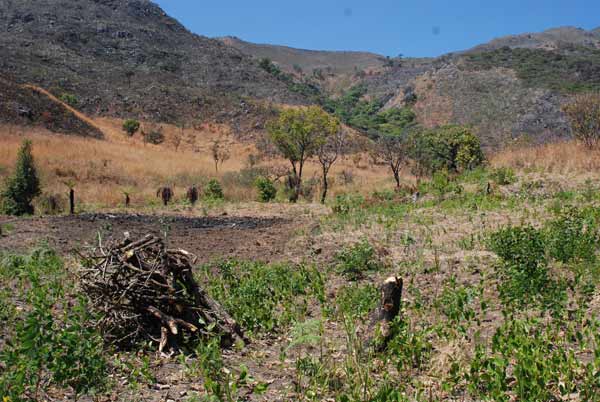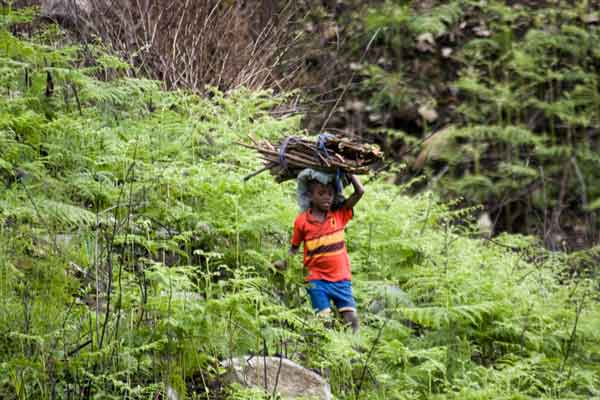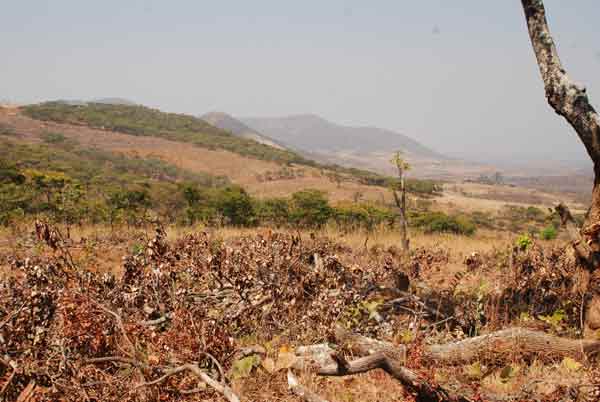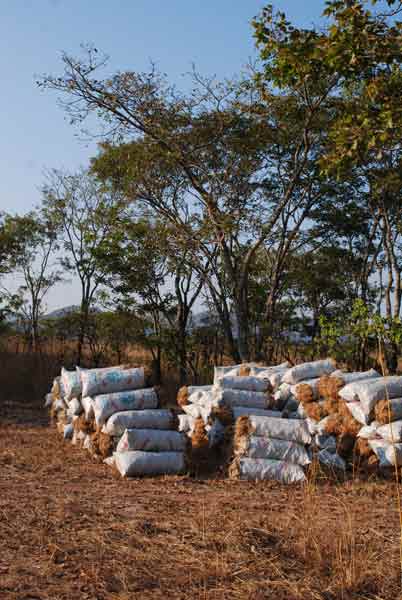
![]()
Mount Moco must be regarded as the single most important site in Angola for bird conservation. It holds more than 50% of the world’s known population of Swierstra’s Francolin, a species which should be Endangered (although is currently listed as Vulnerable). Furthermore, based on best estimates, it holds around half of all Afromontane forest in Angola, and hence a whole suite of species rely on these forests for their existence.
The number of people living around Mount Moco is relatively small, with only one village located near enough to the mountain for inhabitants to use forest resources. This is the village of Kanjonde, with c. 330 inhabitants. There is little evidence of hunting, probably because mammals appear to be almost extinct in the area. Of much greater threat to the conservation of birds at Mount Moco is unsustainable utilisation of wood, clearing of forest for subsistence agriculture, and deliberate burning of vegetation. The village of Kanjonde has no power, and all cooking is done on fuel wood collected from the nearby forests and miombo woodlands. The chief of Kanjonde confirmed that the village had been on the edge of a patch of montane forest in 1922, at the time of his birth, whereas now the nearest patch of forest trees was at least 500 m away; an old Ficus tree in the middle of the village is the only testament to this. Between our two visits in 2005 and 2008, one of the larger forest patches at Mount Moco, near the village of Kanjonde, had visibly been reduced in size, and a recent forest fire in 2008 had burned at least 2 ha of forest that was relatively intact in 2005. All forest patches inspected in 2008 showed signs of recent burning at the edge. The lower valleys of both Mount Moco and Mount Soque are almost entirely cultivated, with all trees being moved. Large tracks of miombo woodland are also being felled to make way for crop cultivation and used for fire wood. Human-caused bush fires are also of concern. Grasslands are burned, probably annually, with fires burning back forest edge and sometimes entering the edges of forest patches. Furthermore, inhabitants of Kanjonde also light fires within forest patches, to clear the under-storey to make access for wood removal easier, and later come to collect dead trunks and branches. These fires, which burn up to the forest edge and into the understorey prevent any possibility of forest regeneration.
In summary, the greatest threats to the Mount Moco environment are:
- Unsustainable, selective logging of large forest trees for wood for construction
- Unsustainable collection of wood for fire
- Uncontrolled bush fires


- Continued clearance of forest and woodland to make way for farming

- Clearing of Miombo woodland for the production of charcoal





